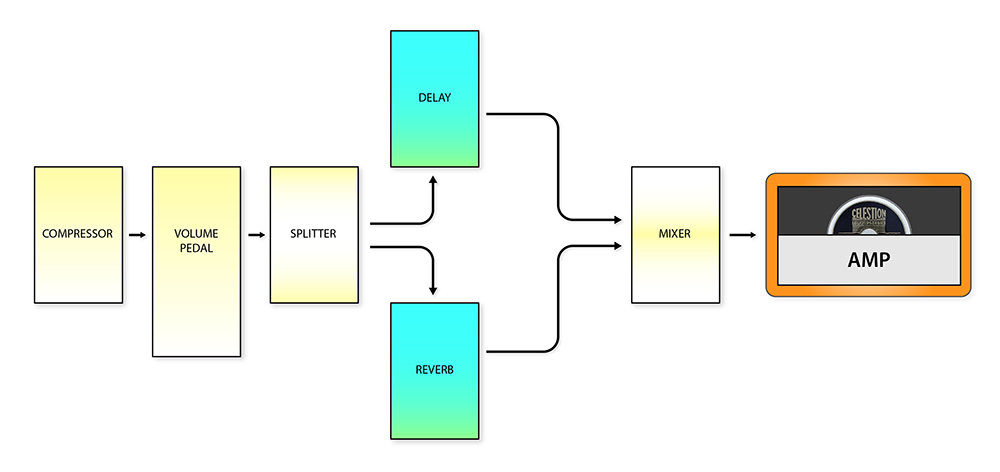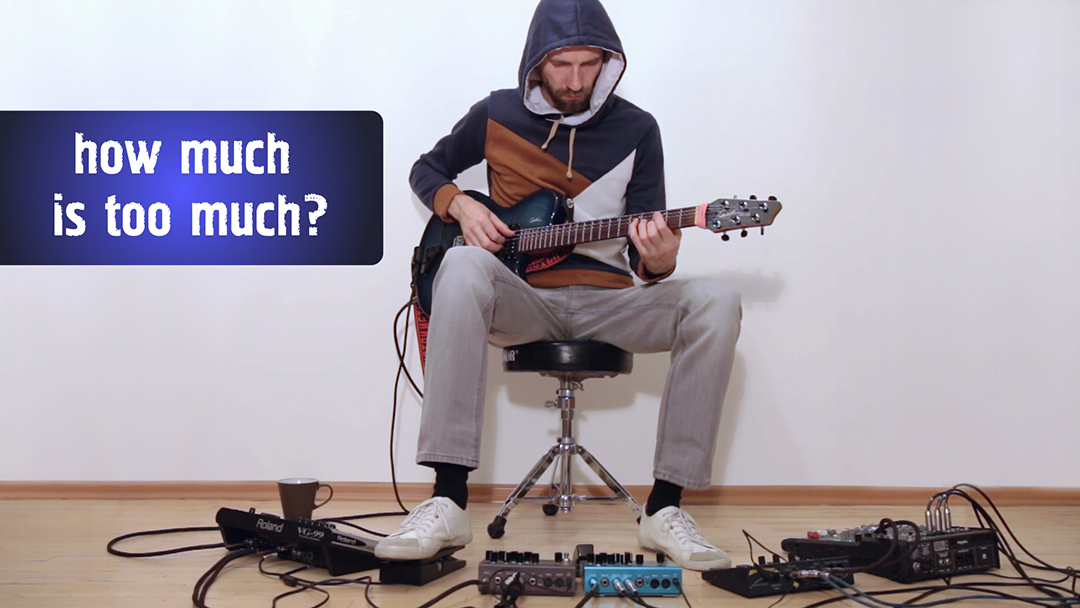"In Parallel" Connection
When we talk about the effects placed “in parallel” most often we talk about “send-return loop” of a combo / amp head. But there is another way to order your effects in chain which is also called “in parallel”. This way implies splitting the signal in two or even more individual lines to process them separately and combine somewhere at the final stage. This is a far more advanced and technically complicated approach. Maybe I will not unveil a secret to you, but this is the way many pro artists record their guitars in studio.
Splitting a signal lets you feed it to different amps, each with its own settings and effects. Mic’d amps are being recorded and mixed in DAW giving you rich and flexible guitar sound. The practical side of such a complicated approach is obvious – we cannot bring tons of pedals, cables, amps, stands, mics and mixers to every performance. Thus if we still intend to split a signal we come up with a mixer that will let us feed the summarized signal to an amp or PA system.

Personally I suppose that parallel connection of effects is an exceptionally useful technique. As a matter of fact we deal with that kind of connection when we use advanced delay machines with a “serial / parallel” switch. Delay there can be either feed one into another (serial) or used in parallel.
If you want to get a sound which is, on the one hand, filled with multiply delays and reverb textures and, on the other hand, sounds plain and “readable” - this is the key. Split the signal somewhere in the beginning of the chain, feed one line to stereo delay(s) and another to stereo reverb, tweak the settings and mix 4 mono channels in 1 stereo. You can even think of applying distortion to only one of the lines (let’s say for delays) while leaving another for clean reverberating pads. You can even go further and add different modulation effects to each line. Try to place the second delay pedal before the reverb and set its time like “dotted”. Then pan these lines in the mixer a bit and get that ultimate stereo "wall of sound" created with only one guitar.

In the video below I use delay and reverb effects connected in parallel. Note how rich and flush, but yet plain and clear the sound is right from the very first chord.



